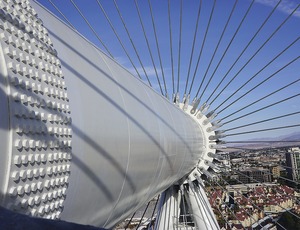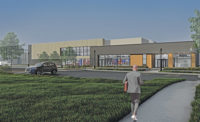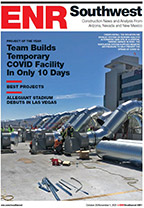For nearly two decades, the ENR Southwest Best Projects competition has honored the most notable construction projects in the region, and while building has not fundamentally changed over that time, the tools have definitely been evolving.

The use of technology has been creeping into the industry for at least the past decade, but the use of tools that offer real-time information sharing are even more prevalent in the projects selected by the judges as this year's crop of winners.
Technology to allow video conference consultations from the work area was used on the Sky Train 1a project at Sky Harbor Airport in Phoenix. A social network application was employed to increase safety on Crescent Dunes Solar Energy Project in Nevada—the region's Project of the Year. Real-time punch lists tied to BIM 360 software ensured quality control on the Roosevelt Point Apartments in Phoenix. Among many of this year's winning projects, the uses of technology are varied and pervasive.
And they impressed this year's jury.
The 10 judges reviewed more than 90 projects that were completed between June 1, 2013, and June 30, 2014. Judges were asked by ENR to participate based upon several factors, including their familiarity with the Southwest market, expertise and reputation. The judges included: Andrew Baird, project manager, AZTEC Engineering of Phoenix; Arnold Canales, principal, ARC Consulting, Phoenix; Chuck Carefoot, vice president of construction, Ryan Cos., Phoenix; Rob Cortazzo, vice president, Skanska, Phoenix; Mark Harberts, architect and engineer, Flintco Constructive Solutions of Albuquerque; Juan Miranda, project manager, Pulice Construction, Phoenix; Craig Randock, design studio leader at HDR Architecture, Phoenix; Carlos Saenz, project manager, Porter Brothers Construction, Gilbert, Ariz.; Joel Wallis, senior vice president of operations, The PENTA Building Group, Las Vegas; and Ken Zarembski, principal/managing director, Walter P Moore Engineers of Phoenix.
The judges were organized into two groups. Each group was assigned to review half of the entries via an online interface and to assign a numerical ranking based on five criteria: overcoming challenges and teamwork; safety; innovation and contribution to the community; construction quality and craftsmanship; and the function and/or aesthetic quality of the design.
Projects that experienced a construction-related fatality were automatically disqualified.
The top-scoring projects were then presented to the judges who debated the merits of each project and chose a category winner and one or more awards of merit.
If a judge was employed by or did any work on the projects being considered, that judge was assigned to a different category.
Each group then determined their nominee for Project of the Year, and a vote was taken and an overall winner selected. The two projects that reached the final round were the Crescent Dunes Solar Energy Project, in Nye County, Nev., and the Agua Nueva Water Treatment Plant in Tucson.
Profiles on all of the winning projects are presented on the following pages.
Also highlighted are the results of the second annual Excellence in Safety award. More than 40 projects were considered based upon their OSHA incident rates, lost-time accidents, total man-hours and the quality of the project's safety programs.
The safety competition was adjudicated by Scott Wilson, vice president, Wilson & Co., Albuquerque; Arnold Canales, principal, ARC Consulting, Phoenix; and Elton Dalmolin, director of safety & health, FNF Construction, Tempe, Ariz.
The team of experts chose Banner Estrella Medical Tower Addition in Phoenix as this year's pinnacle of safety performance. The project was constructed by McCarthy Building Cos., Phoenix.








Post a comment to this article
Report Abusive Comment